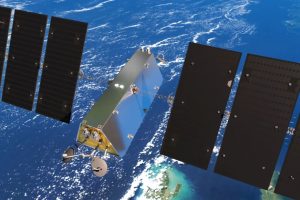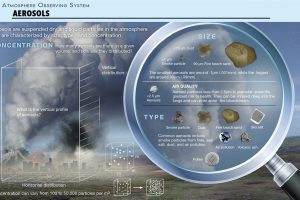It also announced a $269m investment over eight years in the radio astronomy project.
The National Research Council of Canada’s (NRC) Herzberg Astronomy and Astrophysics Research Centre will oversee the investment and will be working with Canadian industrial partners to deliver key observatory systems.
For example, it has also been announced that Canada’s MDA Space has been awarded the SKAO construction contract to develop and integrate the correlator and beamformer for the SKA-Mid telescope in South Africa. This site acts as the “brain” of the array, combining the signals received by its 197 antennas.
The system built by the NRC and MDA Space is described as using “state-of-the-art field programmable gate arrays (FPGAs) which carry out mathematical calculations extremely quickly, but require highly specialised programming”.
“Canada has been a long-standing leader in astronomy and the exploration of the universe, and Canada’s membership in the Square Kilometre Array Observatory will give Canadian researchers access to the world’s most powerful radio-telescope,” said François-Phillipe Champagne, Canada’s Minister of Innovation, Science and Industry. “Beyond astronomical discovery, SKAO-related technologies have the potential to enhance the everyday life of Canadians, through better networks, and in other areas like more accurate and advanced driver assistance systems in cars.”
The NRC will represent Canada in the SKAO Council.
Note that astronomers at Canadian institutions are involved in 12 of the 14 SKAO Science Working Groups, including currently co-chairing the Magnetism group, highlighting the community’s interest in a broad range of SKAO science areas.
“Canada has been a valued partner within the SKA project for over 20 years, and I am delighted to welcome them as our newest Member, extending the Observatory’s membership into North America,” said SKAO Director-General Prof. Phil Diamond.
“Just over a year ago at the SKA-ngVLA meeting in Vancouver, I saw first hand the enthusiasm among astronomers in Canada, particularly early career researchers who will be using the SKA telescopes. Now we can look forward to further deepening the ties between our colleagues there and the broader SKAO community as we progress through construction and into operations in the coming years.”
Pictured above, left to right, are Prof. Kristine Spekkens, Prof. Philip Diamond and SKA-Mid Senior Project Manager Ben Lewis at the MDA Space early correlator integration lab with MDA Space’s David Stevens and NRC’s Mike Pleasance.
Pictured lower are the Square Kilometre Array Observatory Global Headquarters, located on the Jodrell Bank site, which is a UNESCO World Heritage Site for its contribution to the development of radio astronomy.
The SKAO GHQ is home to some 160 professionals from 23 countries overseeing the work of the intergovernmental organisation.
Funded by a £16.5 million grant from the UK Government, the University of Manchester and the local Cheshire East Council, it was designed to become an international collaboration and “a nexus for radio astronomy internationally”.
Images: Square Kilometre Array Observatory
See also: Jodrell Bank to coordinate mitigation of satellite constellations on astronomy
 Electronics Weekly Electronics Design & Components Tech News
Electronics Weekly Electronics Design & Components Tech News





